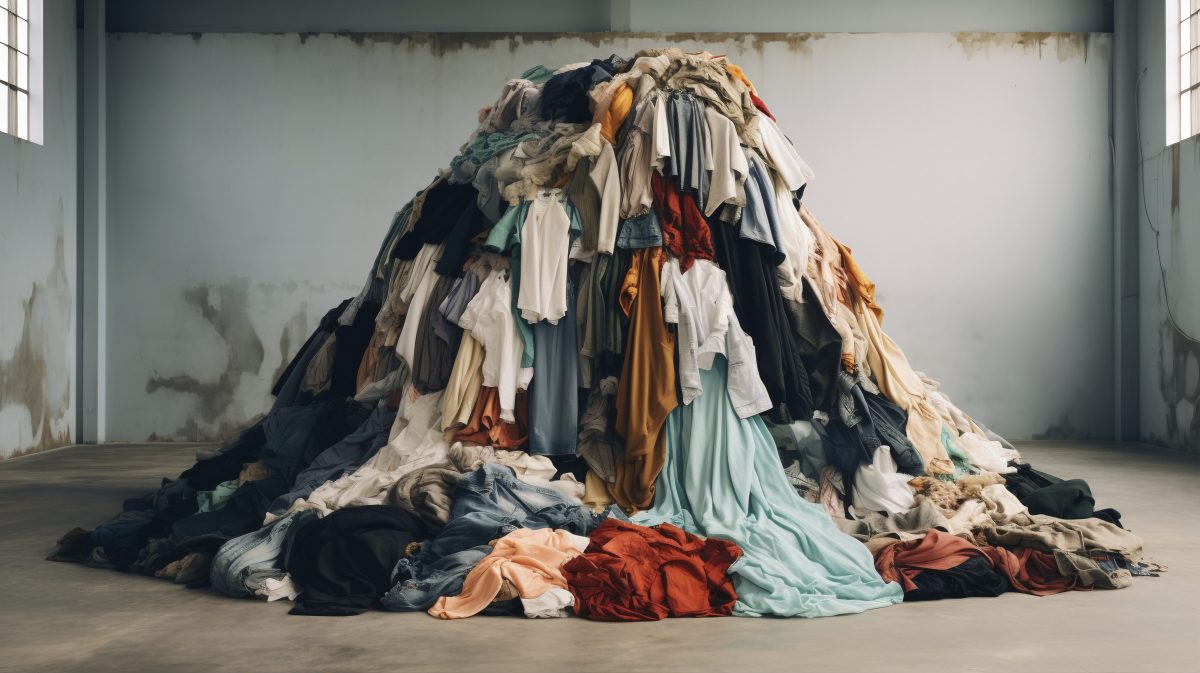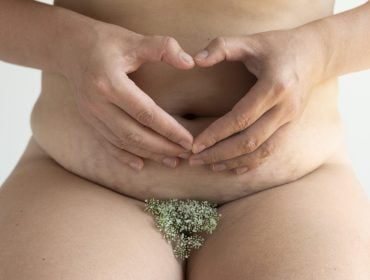Pubic Lice from Clothing: How to Prevent and Treat
Pubic lice, also known as “crabs,” can be transmitted through various nonsexual means, much like how a cold can spread through shared surfaces and close contact. Contrary to common belief, pubic lice can be contracted from infested clothing. Clothes, towels, and bedding can harbor these parasites, leading to inadvertent infestation when these items come into contact with the human body.
Identifying Pubic Lice
Pubic lice, scientifically known as Pthirus pubis, are small parasitic insects. They can be found in coarse body hair such as the pubic region, but may also inhabit other areas like the armpits or chest.
To the naked eye, adult pubic lice appear as tiny, grayish-white or tan specks. They are roughly 1.1 to 1.8 mm in length and can be difficult to see without magnification, often mistaken for dandruff or skin debris.
Nits are the eggs that firmly attach to the base of hair shafts. They may resemble white, oval-shaped dots and, unlike dandruff, are not easily brushed away.
Symptoms to Watch For
Symptoms of pubic lice infestation include intense itching, particularly in the genital area. This itching results from an allergic reaction to lice bites.
Other signs may include small, bluish marks, known as “maculae ceruleae.” These marks are a result of lice bites, potentially leading to skin discoloration. Persistent itching and visible nits are common indicators of pubic lice.
Additionally, you may notice tiny black specks (lice droppings) on your underwear, or observe small, moving lice on pubic hair. A secondary bacterial infection can also occur due to frequent scratching. If you observe these symptoms, consider seeking professional medical advice for confirmation and treatment options.
Common Misdiagnoses
Due to its somewhat obscure symptoms, pubic lice infestation is frequently misdiagnosed as other dermatological conditions.
- Dandruff: Commonly mistaken for lice nits due to flaky scalp conditions.
- Folliculitis: Caused by infected hair follicles, this might be confused with the discomfort from lice bites.
- Scabies: Both conditions cause intense itching, making differentiation difficult without a visual inspection.
- Contact Dermatitis: This skin irritation can produce similar symptoms, such as itching and rash.
- Tinea Cruris (“Jock Itch”): A fungal infection that can induce itching and discoloration in the genital region.
Misdiagnosis can lead to inappropriate treatments that do not address the true issue. Accurate diagnosis is critical for effective treatment, and professionals often use magnification to identify lice or nits.
Understanding these common misdiagnoses can help in seeking the correct medical attention for pubic lice.
Transmission Via Clothing
Pubic lice, scientifically known as Pthirus pubis, can be transmitted through clothing, including items like underwear, bedding, and towels. Even though sexual contact remains the primary mode of transmission, nonsexual means are not uncommon.
Shared fabric surfaces that come into close contact with the genital area can harbor these parasites, facilitating their transfer to another person.
How It Happens
Secondary transmission of pubic lice can occur via clothing and shared fabric items. When clothing or fabrics contaminated with pubic lice come into contact with another person’s skin, the lice can easily transfer, leading to an infestation. This often happens when items like underwear, towels, or bedding are shared or used in close succession.
It’s important to note that pubic lice can survive for up to 24 hours on clothing and fabric surfaces, enhancing the risk of transmission. Therefore, using laundered clothes and clean bedding minimizes the chances of encountering these parasites.
Additionally, crowded and communal living conditions, such as dormitories or hostels, can increase the likelihood of pubic lice spreading through indirect contact. Proper hygiene, regular laundry routines, and avoiding sharing personal items are key to preventing transmission.
Risk Factors
Certain situations and environments can increase the likelihood of indirect transmission of pubic lice.
- Shared clothing: Using garments that have been worn by an infected individual.
- Communal bedding: Sleeping in beds or using linens that have not been properly laundered.
- Public or shared bathrooms: Contact with infested towels or clothing left in communal areas.
- Crowded living conditions: Environments like dormitories or shelters where personal items are often shared.
- Second-hand clothing: Purchasing and wearing previously owned clothing that may carry lice.
These risk factors underscore the importance of personal hygiene and the regular washing of clothes and bedding. To minimize these risks, always launder purchased second-hand items and avoid sharing personal items with others. By being mindful of these factors, individuals can effectively reduce the chances of pubic lice transmission.
Prevention Strategies
To mitigate the risk of pubic lice from clothing or other nonsexual methods, always wash and dry second-hand clothing on high heat before using them. Sanitation, such as regular laundering, is instrumental in eliminating any potential lice.
Avoid sharing personal items like towels or undergarments, as lice can thrive on such surfaces. Vigilance in these practices will greatly diminish the likelihood of infestation.
Safe Laundry Practices
Adopting proper laundry techniques is pivotal in preventing the transmission of pubic lice through clothing.
- Wash in Hot Water: Utilize the hottest water safe for the fabric to kill any lice and their eggs.
- Dry on High Heat: Use a high-heat setting on the dryer, as heat is effective in eradicating lice.
- Use Detergent: Confirm the use of a strong detergent to ensure comprehensive cleaning.
- Separate Laundry: Wash potentially contaminated clothing separately from other laundry to prevent cross-contamination.
- Regular Cleaning: Maintain a consistent schedule for laundering clothes and bedding.
These steps enhance your laundry regimen, effectively reducing the risk of lice transmission. By following these guidelines, you safeguard against parasites that may linger on fabrics.
Storing Clothes Properly
Properly storing clothes is essential for maintaining hygiene and preventing infestations such as pubic lice. Using airtight containers or vacuum-sealed bags significantly reduces the likelihood of lice spreading.
Always separate clean clothes from any that may have been exposed to potential contaminants. Closets, drawers, and storage spaces should be clean, dry, and well-ventilated, minimizing conducive environments for lice eggs (nits) to thrive.
Ensure regular inspection of storage areas for any signs of infestation and take necessary action immediately. Using cedar or lavender sachets can be beneficial as their natural repellant properties deter various pests, including lice.
Ultimately, the key to safeguarding one’s home is vigilance in these habits. Routine maintenance ensures that storage spaces do not become breeding grounds for lice and other parasitic insects.
Effective Treatments
When facing pubic lice infestations, a variety of over-the-counter treatments, such as permethrin-based creams, prove effective. Additionally, prescription medications may be warranted in more severe cases. Ensuring all affected areas and personal belongings are thoroughly cleaned is crucial, including washing clothes in hot water, vacuuming furniture, and meticulously hand-washing items that cannot be laundered.
Over-the-Counter Remedies
Over-the-counter remedies are widely accessible. Common treatments include lotions and shampoos containing permethrin. These products are specifically formulated to target and eliminate pubic lice. For optimal efficacy, it is essential to follow the application instructions accurately, ensuring that the affected areas and surrounding hair are thoroughly treated. Additionally, reapplication may be necessary depending on the product’s guidelines.
Most of these remedies are available without a prescription and can be found at pharmacies, drugstores, and online retailers. They are designed for ease of use, making it simple for individuals to apply the treatments in the privacy and comfort of their own homes.
If symptoms persist despite treatment, consider seeking medical advice. Healthcare professionals can provide stronger prescription options and evaluate for potential complications or misdiagnosis. Achieving full eradication of pubic lice often requires a comprehensive approach, combining effective treatments with diligent personal and environmental hygiene.
Professional Medical Treatments
Healthcare professionals can offer various prescription options that are potent and specifically formulated to target pubic lice, ensuring higher efficacy. Doctors might recommend medications containing stronger insecticidal properties.
These include creams, lotions, and shampoos containing permethrin or malathion, which are available by prescription only. Some treatments may also require repeated applications to fully eradicate the infestation, based on the life cycle of the lice.
Furthermore, it is essential to follow medical advice closely and attend any follow-up appointments. Your healthcare provider may also suggest rigorous hygiene measures, such as washing bedding, clothing, and any other fabrics that may have come into contact with the infested area, to prevent reinfection.
Medically Reviewed by Kaci Durbin, MD, MBA, FACOG on May 16, 2024
Secure and Confidential
STD testing services
The fastest results possbile - available in 1 to 2 days

Tagged
Categorized As
Author: STD Check Editorial Team
At STDCheck.com, we go to great lengths to ensure quality content. We’re using our own collection of data. It is not bought or made up for “click-bait” purposes. We don’t entice traffic with cheesy graphics or raunchy headlines. Our information is to promote STD testing, educate people, let go of social stigmas, and bring awareness. We also provide a completely confidential atmosphere through private testing. When we produce an article, it is fact-based. We check it with medical advisors that approve it. Our staff consists of doctors and other medical professionals who peer review the content we make available on STDCheck.com. From all over the world, we have sourced the best and the brightest content developers, including medical professionals, marketing engineers, data scientists, content specialists, and media relations.




